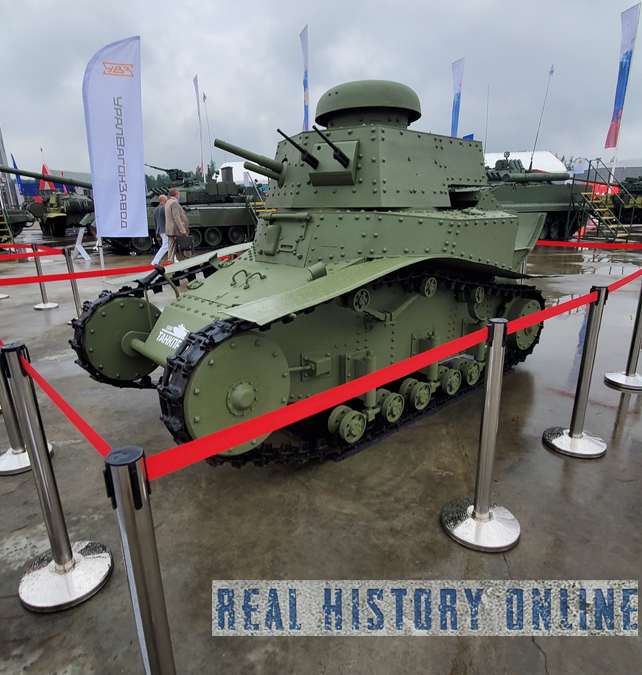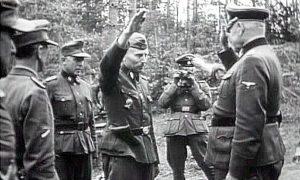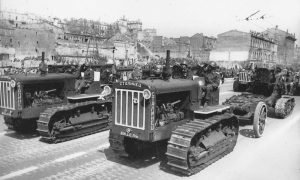The Soviet Union’s First Tank
T-18 (MC-1) – Soviet light/Infantry support tank in the 1920s. Created in between 1925-1927. It became the first Soviet-designed tank. Serially produced from 1928 to 1931, 959 tanks of this type were produced in a few versions, not counting the prototype. In the late 1920s – early 1930s, the T-18 formed the basis of the Red Army’s tank fleet, but was quickly supplanted by the more advanced T-26. Used in battle in the conflict of the Chinese Eastern Railway, but in 1938-1939, the obsolete and extremely worn-out T-18s were mostly decommissioned or used as fixed firing points. They were used in small quantities at the initial stage of the Great Patriotic War.
The first tank produced in the USSR was Tank M (Krasnoe Sormovo, Renault-Russian ), based on the French Renault FT-17, several of which were captured by the Red Army in 1919. To start serial production in France, a license and equipment were purchased.
The captured Renault FT-17 tank was provided to the Krasnoye Sormovo plant, which was instructed to set up its serial production with the release of the first batch of 15 units by the end of 1920. This vehicle looked more like a pile of metal, as Ivan Ilyich Volkov, a hereditary worker and tank builder, recalls, it lacked an engine, transmission and many other elements. The designers of the plant had to solve the most important task: to restore all the units of the combat vehicle in the drawings. A group of engineers, headed by N. I. Khrulev and P. I. Saltanov, energetically got down to business, Petrograd designers from the Izhora plant came to the aid of the Sormovites, and the workers of the AMO plant also took part.
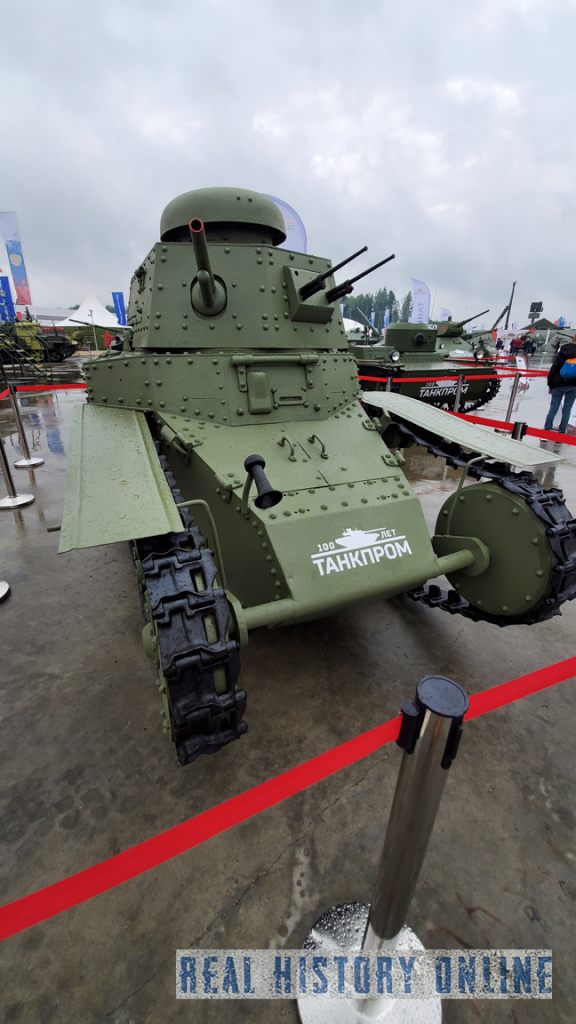
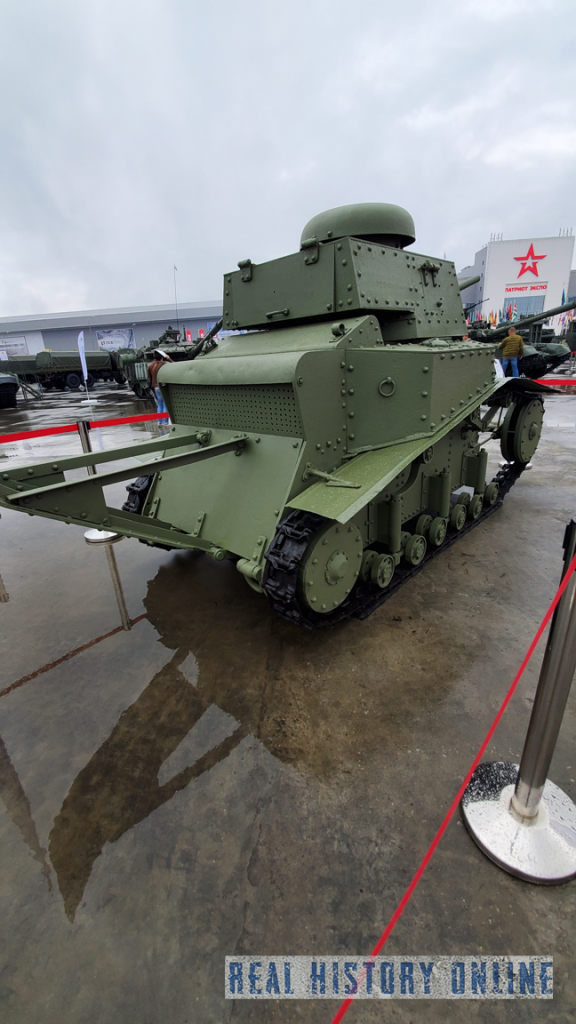
Despite numerous difficulties, the plant managed to assemble the first tank by August 1920, and soon manufacture the remaining 14 ordered vehicles. However, due to the economic and political difficulties of that period, further production of the tank was not carried out. Later they created the T-16 and T-17. The digital index of these tanks was taken from the Renault FT-17.
In practice, they returned to the issue of tank production in 1926, when a three-year tank building program was adopted. It envisaged, as a minimum plan, the organization of one tank battalion and a training company equipped with infantry tanks, as well as one battalion and company equipped with tankettes. According to calculations, this required the production of 112 machines of each type. Work on the creation of a more advanced tank in the USSR by that time was already underway. In 1924, the Tank Building Commission developed TTT for an infantry escort tank, approved at the end of the same year. In accordance it was supposed to create a tank weighing 3 tons, with armament from a 37-mm cannon or machine gun, 16-mm armor and a maximum speed of 12 km/h. At the same time, since 1924, in order to adopt foreign experience, the study of captured foreign tanks was carried out for two years, of which the Italian Fiat 3000, which was an improved version of the FT-17, made the most favorable impression. One damaged copy of this tank, apparently captured during the Soviet-Polish War, was transferred to the Bureau at the beginning of 1925. In accordance with the commission’s requirements, the Tank Bureau developed a project for a tank designated T-16. In the spring of 1925, after reviewing the project at the headquarters of the Red Army, TTTs were adjusted: the permissible tank weight was increased to 5 tons in order to accommodate a more powerful engine and the simultaneous installation of a cannon and a machine gun.
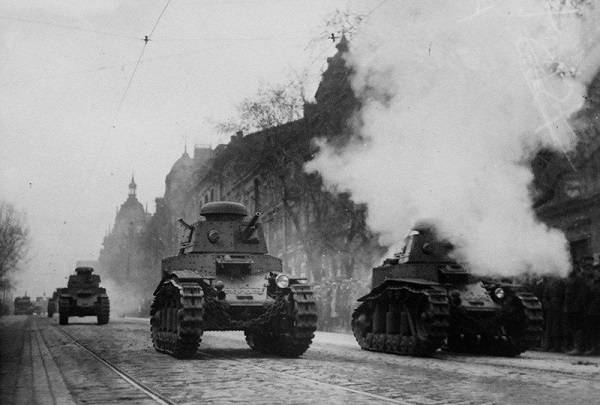
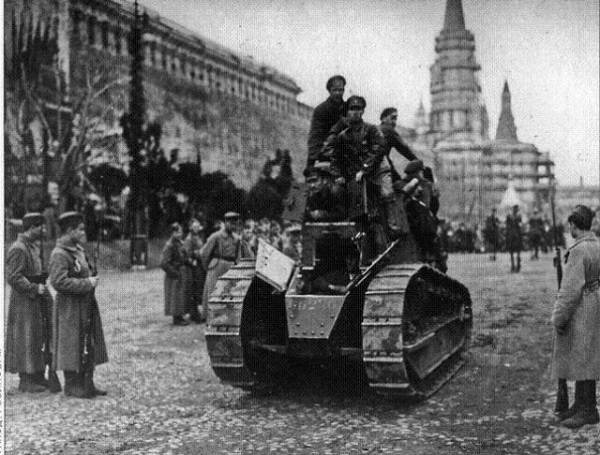
One of the areas of modernization of the T-18 in the early years was the increase in cross-country ability, primarily in terms of overcoming ditches. In 1929, one tank was experimentally equipped with a second ” tail ” in front, removed from another T-18. Due to its characteristic appearance, the converted tank received the nicknames “rhinoceros” and “push-and-pull”. Although the width of the ditch to be overcome at the same time increased, the visibility for the driver deteriorated sharply, as a result of which such a modification did not go into the series. A project was also proposed to install a swivel boom on the T-18 with wheels that lowered into a ditch, after which the tank could overcome an obstacle along them. In addition, the wheels could be used to crush wire fences…. There is no information about whether this project was embodied in metal, although later similar devices were developed in the USSR for more modern tanks.
COMBAT USE:
For the first time, T-18s were used in battle during the conflict on the Chinese Eastern Railway in November 1929. In the autumn of the Trans-Baikal group of the Special Far Eastern Army (Odwan) has been given a company of 10 tanks, one of which was badly damaged during transportation and disassembled for spare parts for the repair of the nine remaining, who also took part in Mishanfusskoy offensive operation 17 – 19 November.
The deployed tanks began to move to their positions late in the evening of November 16, while they were not fully fueled and had almost no ammunition for the guns, and three vehicles were not equipped with machine guns. During the night march, without even having a map of the area, the tanks lost each other and only four of them arrived at the designated point. Here they were refueled and received 40 shells for the gun, after which on the morning of November 17 they proved themselves quite successfully during the assault on the Chinesepositions. Two of the lagging tanks went to the location of other Soviet units, where, without shells, they still managed to support the attack of the infantry of the 106th Infantry Regiment, which used them to cover from enemy fire. By the middle of the day, these two tanks nevertheless joined the rest and the company, already consisting of six vehicles, attempted to storm the Chinese fortifications, but was stopped by an anti-tank ditch. The company suffered no combat losses during the day, but two tanks were out of action for technical reasons, although one of them was repaired on the same day. By the evening, two more stragglers arrived, wandering across the steppe after the loss of the detachment, until they ran out of fuel, while the third one had a gearbox out of order.
The next day, a company of seven tanks again supported the infantry in the assault on the fortified positions of the Chinese, but they managed to achieve any result only after the anti-tank ditch was partially destroyed. The tanks did not suffer losses again, only one vehicle was damaged by grenades…. Another tank was damaged by grenades on the next day of the fighting, another vehicle was out of order due to the dropping of the track, but none of the crew members died during the fighting. In general, the performance of the tanks during the conflict was assessed by the command as satisfactory – despite the extremely poor training of the crews and the poor organization of their actions, the T-18s performed well with the support of the infantry. The battles showed an extremely low efficiency of the 37-mm cannon’s fragmentation projectile, the Red Army men also expressed their wishes to increase the cross-country ability, speed and armor of the tank.
MODERNIZATION ATTEMPTS
In 1933, the design bureau of the Bolshevik plant developed a project for the modernization of the tank, which received the designation MS-1a with a modified undercarriage, which included a new drive wheel with a diameter of 660 mm, and elements of the undercarriage of the T-26 tank (one and a half bogies with an elastic element in the form of leaf springs and support rollers). It was assumed that with the help of this it would be possible to increase the resource of the running gear and the speed of movement, as well as to reduce the longitudinal vibrations of the tank on the move. However, the tests of the prototype, which began on May 191933, showed that its mobility even deteriorated and further work on the MS-1a was discontinued.
When, in 1937, the Armored Directorate was tasked with modernizing the obsolete armored vehicles that remained in service, the T-18 became one of the first candidates for it. The modernization project, designated T-18M, was developed in 1938 at the design bureau of plant number 37 under the leadership of NA Astrov. The main change was the replacement of the worn out power plant with a GAZ M-1 engine with a capacity of 50 hp. with., also installed on a small tank T-38 and the installation of the gearbox taken from it, driving wheels and a steering mechanism of the type of side clutches. In this regard, the shape of the hull was also slightly changed, which also lost its “tail”. The chassis was also modified, and the turret was lightened by eliminating the stern niche and changing the shape of the commander’s cupola. The tank was equipped with a 37 mm B-3 cannon.or 45-mm 20-K, which by that time had already been mass-produced for several years. The only prototype of the T-18M was built and tested in March 1938. According to their results, it was noted that despite the clear increase in the characteristics of the tank, the modernization also created some new problems. In general, it was concluded that the combat value of the T-18M does not justify the costs of modernizing the existing tank fleet, and therefore further work in this direction was discontinued.


